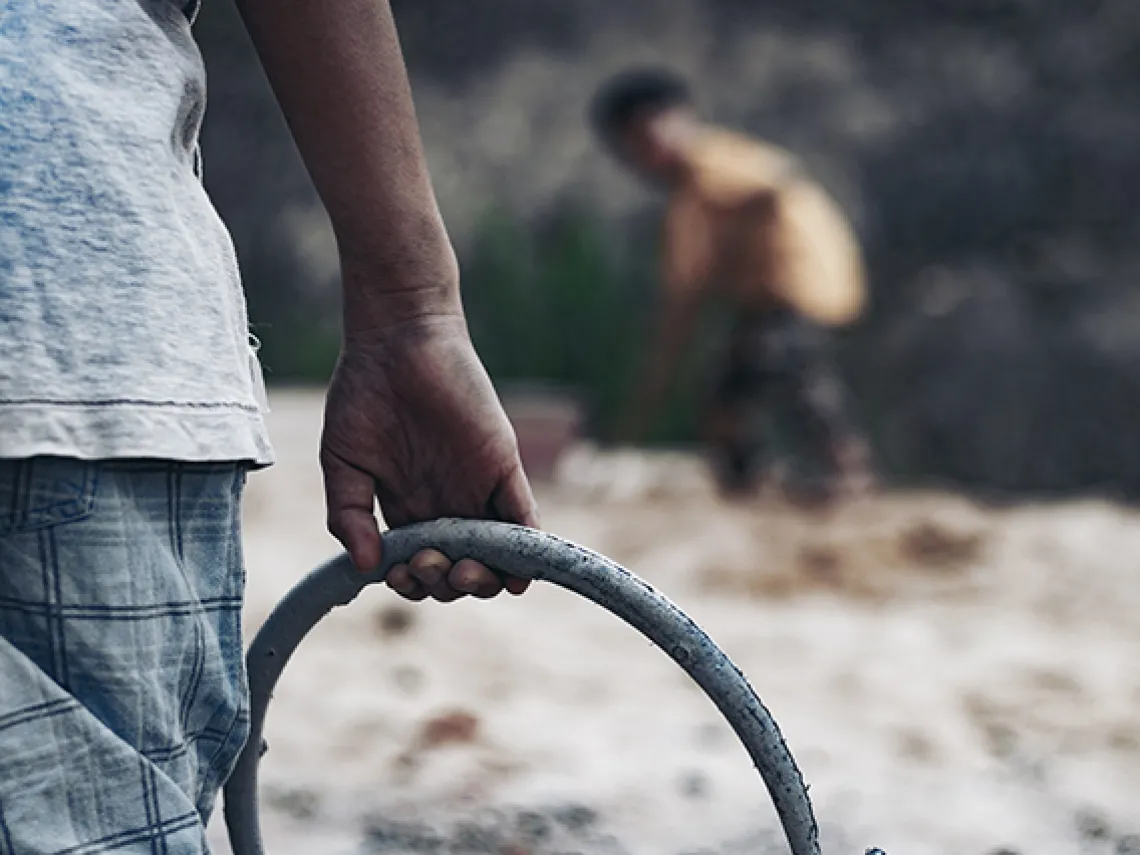New Research by Shefali Milczarek-Desai is the First to Analyze the Current Migrant Child Labor Crisis in the United States
Desai's new research explores the interplay between employment and labor laws, immigration law and policy, and the vulnerability of migrant children

While the topic of child labor in the United States has been discussed in legal literature, Associate Professor of Law and Co-Chair of the Bacon Immigration Law and Policy Program Shefali Milczarek-Desai's new paper is the first to analyze the current migrant child labor crisis.
“(Hidden) in Plain Sight: Migrant Child Labor and the New Economy of Exploitation,” set to be published in the June issue of the Arkansas Law Review, sheds light on the challenges faced by migrant children at the intersection of employment and labor law, and immigration law and policy.
“Like many Americans, I started reading about the current migrant child labor crisis in which kids, some as young as thirteen, work in extremely dangerous and exploitative jobs, when Hannah Dreier, a New York Times investigative journalist, began writing stories about these children a little over a year ago,” said Desai.” These stories were really hard to read – they detailed the tragic and sometimes horrific conditions that hundreds of migrant children, most of whom are unaccompanied minors, work in throughout the United States so that the rest of us can enjoy beloved products like Lucky Charms, Cheerios, Fritos, Tyson Chicken, Ben & Jerry's ice-cream . . . the list goes on and on.”
Dreier’s exposés reveal that approximately 200,000 migrant children currently work in extremely harmful and hazardous workplaces across the United States – in clear violation of federal and state laws. Dreier’s reporting also demonstrates how although some of America’s most popular brands do not directly hire children, they often benefit from cheap migrant child labor practices engaged in by contractors and subcontractors.
“When I looked at these kids, I couldn't help but think of my own two teenaged sons. If not for an accident of birth, they could be in the same awful and precarious predicament as these migrant child workers. I felt like I couldn't just sit there and do nothing, so I did what I know how to do: I thoroughly researched the issue, including delving into the history of our child labor laws, to try and figure out why these laws weren't helping these kids and what might be done about this colossal legal failure,” said Desai, whose current scholarship topics employ critical legal frameworks to analyze im/migrant workers’ access to paid sick leave and other employment protections.
Her research lays out the tumultuous history of child labor regulation in the U.S. and transitions to the current legal landscape surrounding child labor laws, including these laws’ failure to protect migrant children.
Currently, child labor laws at both the federal and state level restrict children from working in hazardous jobs. But an increase in the number of unaccompanied minors entering the country, mostly from Central American, has led to a rise in unlawful child labor practices.
“These kids come here with the express purpose of working so they can send money back to desperate families back home who cannot survive without their support. What these kids don't realize, however, is how expensive it is just to pay for rent and food in the United States – and from what we know, many of these kids have to support themselves once they get here,” said Desai.
When current child labor laws are enforced, employers terminate all minors working in violation of the law, either to later re-hire them once the enforcement storm has passed, or leading them to find equally, if not more dangerous work less likely to be regulated by child labor laws.
“This is because even when child labor laws are enforced – and that only occurs a very tiny percentage of the time due to grossly under-resourced employment and labor agencies – the result is that these children lose their sole means of survival. Because they and their families back home are desperate, migrant child workers eventually go back to the same or similar dangerous jobs once agency action is over or worse, some go into even more dangerous work deeper in the underground, shadow economy where legal regulation is even less likely. In the end, enforcing the child labor laws we have on the books today does not help these kids,” says Desai.
“(Hidden) in Plain Sight: Migrant Child Labor and the New Economy of Exploitation” offers a different legal framework—one that centers migrant children’s experiences as children, migrants and workers—to chart a multi-faceted course that might realistically address the challenges faced by migrant child workers who are precariously perched at the intersection of migration and labor.
One solution offered is to require mandatory workers’ rights education for all high school students so that kids who are working in hazardous jobs receive basic occupational safety and health information. Another is to create jobs programs for this population to help them obtain less dangerous work while simultaneously filling the gaps brought on by labor shortages throughout the country.
“The best idea, of course, is to increase legal pathways for their parents to come here to work so that the kids don't have to work in these types of jobs at all,” said Desai “This is a win-win for everyone because the U.S. is in dire need of workers, especially in industries like long-term care where there is already a shortage of nearly half a million workers. If we allowed migrant children's parents to legally work in the United States, these children would not be subjected to the horrors detailed in Dreier's reporting and might actually have a shot at the kind of childhood my teenagers have.”
